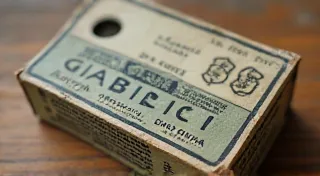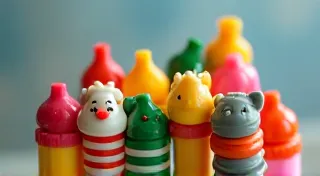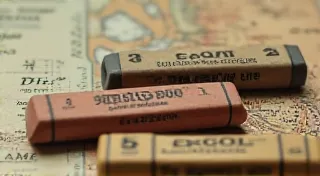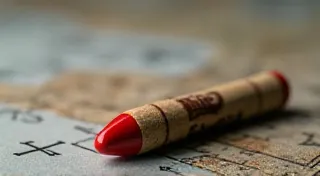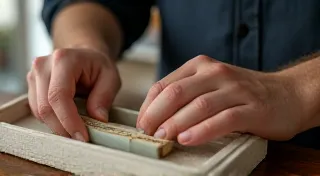Identifying Vintage Rubber Erasers: Key Features & Markings
Welcome to the fascinating world of vintage pencil erasers! More than just a tool for correcting mistakes, these small objects offer a captivating glimpse into past design trends, manufacturing techniques, and popular culture. But how do you know if that intriguing eraser in your hand is a genuine vintage piece, and not a modern reproduction? This guide will equip you with the knowledge to distinguish authentic vintage rubber erasers from later imitations, focusing on key features, common markings, and material characteristics.
The Allure of Vintage Erasers
Collecting vintage pencil erasers has become a niche hobby with a dedicated following. The appeal lies in several factors: their historical significance, aesthetic appeal, the rarity of some specimens, and the nostalgia they evoke. Early erasers represent a period of significant industrial advancement and changing consumer habits. As pencils became increasingly commonplace, the demand for erasers rose, leading to innovation in design and manufacturing. Beyond function, erasers were often produced with artistic flair, featuring intricate designs, playful characters, and vibrant colors.
Early Eraser Materials: From Gum to Rubber
Understanding the evolution of eraser materials is crucial for identification. Early erasers weren't made of the vulcanized rubber we're familiar with today.
- Gum Erasers (1770s-1830s): These were made from bread crumbs or stale bread, kneaded with sugar and a pinch of lavender. They were rather crumbly and not particularly effective.
- Putty Erasers (Early 1800s): These were made from a mixture of casein (milk protein) and graphite. While slightly better than gum erasers, they were still quite messy.
- Vulcanized Rubber Erasers (1839 onward): Charles Goodyear's invention of vulcanization revolutionized the process, creating a durable, elastic, and effective erasing material. This marked the true beginning of what we recognize as a modern eraser.
Knowing the approximate timeline of material usage can provide initial clues about an eraser's age.
Key Features to Examine for Vintage Eraser Identification
Let's delve into the specific details to consider when examining a potential vintage eraser.
1. Material Characteristics
While determining the *exact* composition of a vintage eraser can be challenging without laboratory analysis, you can still observe key characteristics.
- Texture: Early vulcanized rubber erasers often have a slightly grainy or porous texture, particularly those from the mid-to-late 19th century. Later erasers (early 20th century and beyond) tend to be smoother.
- Color: Bright, vibrant colors weren't always possible with early rubber compounds. Initially, erasers were predominantly black, gray, or brown. The introduction of synthetic dyes expanded the color palette, but even then, some colors faded significantly over time.
- Odor: Old rubber often possesses a distinct, characteristic odor. This smell can vary depending on the rubber composition and any dyes or preservatives used.
- Flexibility & Durability: Genuine vintage rubber erasers, while often showing signs of age (cracking, brittleness), should exhibit a degree of elasticity. Reproduction erasers made with inferior rubber may feel excessively hard or brittle.
Image: 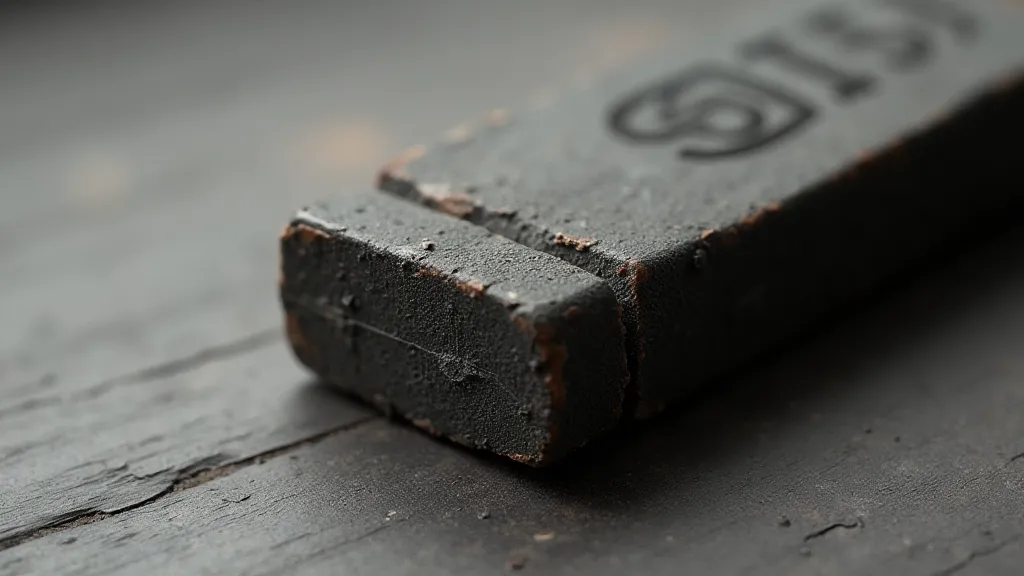
2. Markings & Branding
Markings are often the most reliable indicators of an eraser's age and origin. However, identifying markings requires careful observation and research.
- Logos & Brand Names: Early eraser manufacturers often stamped their logos and brand names directly onto the eraser. Researching these brands can provide clues about the era of production. Examples include Faber-Castell, Eagle Pencil Company, Mars, and others.
- Patent Dates: Some erasers bear patent dates. These dates can precisely pinpoint the date the design was patented, giving a specific timeframe for production.
- "Made in..." Stamps: "Made in USA" or "Made in Germany" stamps became common in the early 1900s, offering geographic and time-related information.
- Shape & Design: Certain shapes (e.g., novelty erasers shaped like animals or characters) were popular during specific periods. Recognizing these trends can help narrow down the timeframe.
- Typography: The style of lettering used on the eraser can be a powerful indicator. Early fonts differed significantly from modern ones.
Image: 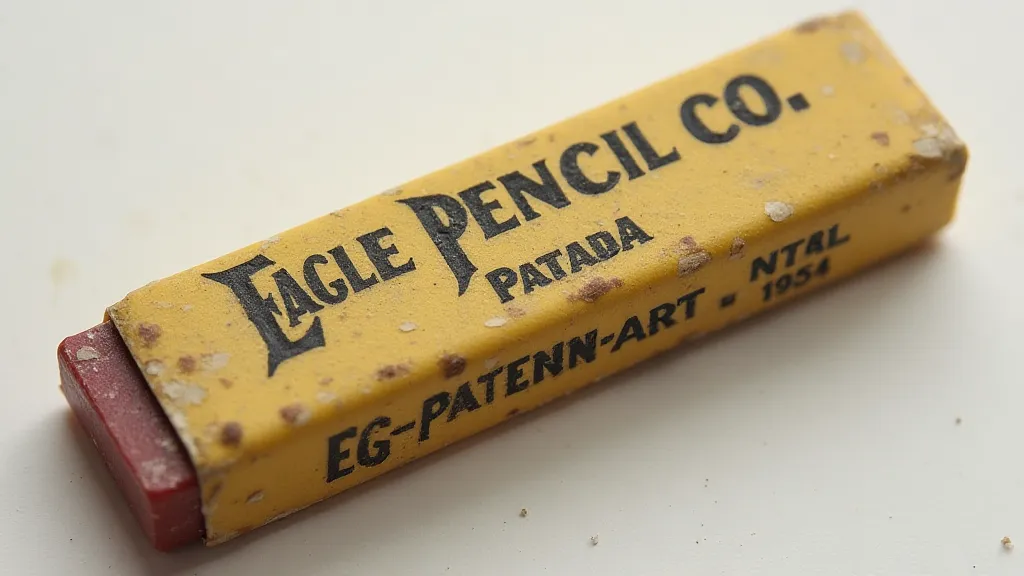
3. Common Manufacturing Techniques & Anomalies
Early eraser manufacturing wasn't as precise as modern techniques. Look for these telltale signs:
- Uneven Surfaces: Hand-pressed erasers might exhibit slight irregularities in shape or thickness.
- Mismatched Colors: In some cases, early production runs might have slight color variations.
- Mold Marks: Erasers produced using molds often bear subtle marks or lines from the mold itself.
- Imperfections: Bubbles or other minor imperfections in the rubber are more common in older erasers.
Reproductions & Forgeries
Unfortunately, the popularity of vintage eraser collecting has led to the creation of reproductions and forgeries. Here’s how to spot them:
- Modern Materials: Reproductions often use a more pliable, less authentic rubber compound that lacks the characteristic odor and texture of vintage rubber.
- Crisp, Perfect Condition: While some vintage erasers survive in excellent condition, most show some signs of age. Erasers that appear too pristine are suspect.
- Incorrect Markings: Carefully verify any markings against known authentic examples. Forgers sometimes use incorrect or misleading information.
- Low Price: An unusually low price for a seemingly rare or desirable eraser is a red flag.
Image: 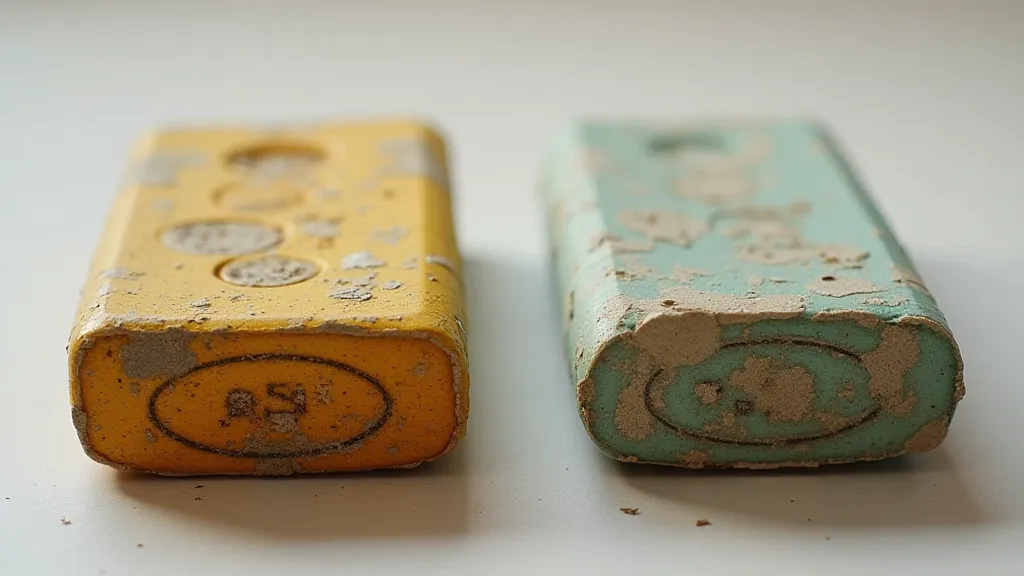
Resources for Further Research
Identifying vintage pencil erasers can be a rewarding but challenging endeavor. Here are some resources to help you deepen your knowledge:
- Online Forums & Communities: Connect with other collectors to share information and ask questions.
- Auction Records: Examine past auction sales to compare markings, condition, and prices.
- Antique & Collectible Price Guides: While not always comprehensive, these guides can provide general pricing information.
- Museum Collections: Some museums have collections of historical stationery items that can offer valuable insights.
By combining careful observation, diligent research, and a keen eye for detail, you can develop the skills necessary to identify and appreciate the fascinating world of vintage rubber erasers.
